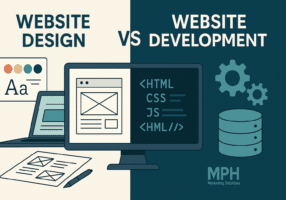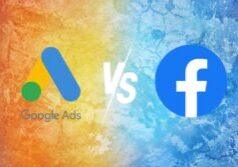Influencer marketing has taken the marketing world by storm. If you’ve been on social media lately, chances are you’ve come across a post by a popular influencer promoting a product or service. But what exactly is influencer marketing, and why should you consider it for your brand?
What is Influencer Marketing?
Influencer marketing is a type of social media marketing that involves endorsements and product placements from influencers—people who have a dedicated social following and are viewed as experts within their niche. This form of marketing leverages the trust and relationship that influencers have built with their audience, making it an effective tool for brands looking to reach a specific target market.
The Rise of Influencer Marketing
Over the past few years, influencer marketing has grown from a niche tactic to a mainstream strategy. As consumers increasingly rely on social media for recommendations, brands have recognized the potential of influencers to sway purchasing decisions. The rise of platforms like Instagram, TikTok, and YouTube has further fueled this trend, making influencers an integral part of the digital marketing ecosystem.
The Power of Influence
Influencers hold a unique power in today’s digital age. They are not just content creators; they are trusted voices who can drive consumer behavior. But what makes influencers so effective?
Understanding the Impact of Influencers
Influencers have the ability to humanize brands, making them more relatable to their audience. Unlike traditional advertising, which can sometimes feel impersonal or pushy, influencer marketing feels more like a recommendation from a friend. This personal touch can significantly impact consumer decisions, making them more likely to trust and purchase a product.
How Influence Drives Consumer Behavior
Consumers are more likely to buy a product that has been recommended by someone they trust. Influencers, who have spent years building relationships with their followers, can sway their audience’s opinions and behaviors. This influence is powerful, especially when it comes to younger audiences who spend a significant amount of time on social media.
Why Brands are Turning to Influencer Marketing
So, why are brands flocking to influencer marketing? The answer lies in its effectiveness and efficiency.
Cost-Effectiveness
Compared to traditional advertising, influencer marketing can be more cost-effective. Instead of spending large sums on TV or print ads, brands can work with influencers who have a direct line to their target audience. This not only saves money but also allows for more targeted and impactful marketing efforts.
Authenticity and Trust
In today’s marketing landscape, authenticity is key. Consumers are tired of being sold to and are looking for genuine recommendations. Influencers provide this authenticity, as they only promote products and services they believe in. This trust translates into higher engagement rates and better ROI for brands.
Targeted Reach
One of the biggest advantages of influencer marketing is the ability to reach a highly targeted audience. Influencers have a deep understanding of their followers’ interests and preferences, allowing brands to connect with the right people at the right time. This targeted reach is invaluable for brands looking to maximize their marketing efforts.
Types of Influencers
Not all influencers are created equal. Depending on your brand’s goals and budget, you may choose to work with different types of influencers.
Mega Influencers
Mega influencers are the celebrities of the influencer world. With millions of followers, they have the ability to reach a broad audience. However, their services come at a premium, and their engagement rates may not be as high as smaller influencers.
Macro Influencers
Macro influencers have a substantial following, typically between 100,000 to 1 million followers. They are well-known in their niche and can offer a balance between reach and engagement.
Micro Influencers
Micro influencers are individuals with a smaller, but highly engaged following. Typically, they have between 10,000 to 100,000 followers. They are often considered experts in their niche, and their recommendations are seen as highly credible.
Nano Influencers
Nano influencers are the smallest in terms of following, usually under 10,000 followers. Despite their small audience, they often have the highest engagement rates. They are ideal for brands looking to build strong, personal connections with a specific community.
Choosing the Right Influencer for Your Brand
Selecting the right influencer is crucial to the success of your campaign. Here’s how you can ensure you make the best choice.
Identifying Your Target Audience
Before you can choose an influencer, you need to know who you’re trying to reach. Define your target audience in terms of demographics, interests, and behaviors. This will help you identify influencers who resonate with the same audience.
Aligning Values and Message
It’s important to choose an influencer whose values align with your brand. The partnership should feel authentic, and the influencer’s message should complement your brand’s voice. This alignment is key to creating a successful collaboration.
Analyzing Engagement and Reach
While follower count is important, engagement rates are even more critical. Look for influencers who have a high level of interaction with their audience. This indicates that their followers are genuinely interested in their content and more likely to engage with your brand.
Building an Effective Influencer Marketing Strategy
A successful influencer marketing campaign starts with a solid strategy. Here’s how to create one.
Setting Clear Goals
Define what you want to achieve with your influencer marketing campaign. Whether it’s increasing brand awareness, driving sales, or growing your social media following, having clear goals will guide your strategy.
Finding the Right Platform
Different influencers excel on different platforms. Depending on your target audience and campaign goals, you may choose to focus on Instagram, TikTok, YouTube, or another platform. Consider where your audience spends most of their time and where influencers in your niche are most active.
Crafting the Perfect Collaboration
Work closely with your chosen influencer to develop a campaign that feels authentic and engaging. Provide them with the necessary information about your brand but allow them the creative freedom to communicate it in a way that resonates with their audience.
The Role of Content in Influencer Marketing
Content is the cornerstone of any influencer marketing campaign. The type of content you create can make or break your campaign.
Visual Content and Storytelling
Visual content is incredibly powerful in influencer marketing. Whether it’s a photo, video, or story, the visuals should be eye-catching and tell a story. Storytelling helps to create an emotional connection with the audience, making the content more memorable and impactful.
The Importance of Authenticity in Content
Authenticity is crucial in influencer marketing. Content that feels genuine and relatable is more likely to resonate with the audience. Encourage influencers to share their personal experiences with your product or service, as this adds credibility to their endorsement.
User-Generated Content
User-generated content (UGC) is a great way to amplify the impact of your influencer marketing campaign. Encourage followers to share their own experiences with your brand and feature this content on your channels. UGC not only boosts engagement but also builds trust with potential customers.
Measuring the Success of Influencer Marketing Campaigns
To ensure your influencer marketing campaign is effective, you need to track its performance. Here’s how to measure success.
Key Performance Indicators (KPIs) to Track
Identify the KPIs that matter most to your campaign. These may include reach, engagement, website traffic, sales, or social media growth. Tracking these metrics will help you evaluate the success of your campaign and make data-driven decisions.
Tools for Monitoring and Analyzing Campaigns
There are various tools available to help you monitor and analyze your influencer marketing campaigns. These tools can track everything from engagement rates to sales conversions, giving you valuable insights into your campaign’s performance.
Adjusting Strategies Based on Data
Use the data you collect to refine your influencer marketing strategy. If certain tactics aren’t delivering the desired results, be prepared to pivot and try something new. Continuous optimization is key to long-term success in influencer marketing.
The Future of Influencer Marketing
Influencer marketing is constantly evolving. Here’s a look at what the future holds.
Emerging Trends
As the influencer marketing industry matures, new trends are emerging. These include the rise of virtual influencers, the growing importance of live streaming, and the increasing focus on diversity and inclusion.
The Growing Importance of Niche Influencers
Niche influencers, who have a deep connection with a specific audience, are becoming more valuable to brands. As consumers seek out more personalized experiences, these influencers can provide the targeted reach that brands are looking for.
Predictions for the Next Decade
In the coming years, influencer marketing will likely become even more integrated into overall marketing strategies. As technology advances, we can expect to see more sophisticated tools for tracking and analyzing campaigns, making influencer marketing an even more powerful tool for brands.
Challenges and Risks in Influencer Marketing
While influencer marketing offers many benefits, it’s not without its challenges.
Dealing with Fake Followers
One of the biggest challenges in influencer marketing is dealing with fake followers. Some influencers inflate their follower counts to appear more influential than they are. To avoid this, it’s important to vet influencers carefully and use tools to check the authenticity of their following.
Managing Public Relations Crises
Influencers are human, and they can make mistakes. If an influencer you’re working with faces a public relations crisis, it can reflect poorly on your brand. Have a plan in place for how to handle these situations and be prepared to distance yourself from the influencer if necessary.
The Legal Landscape
As influencer marketing continues to grow, so does the regulatory landscape. Brands need to be aware of the legal requirements surrounding influencer marketing, including disclosure requirements and advertising standards. Failure to comply can result in fines and damage to your brand’s reputation.
How to Get Started with Influencer Marketing
Ready to dive into influencer marketing? Here’s how to get started.
Setting a Budget
Determine how much you’re willing to invest in influencer marketing. Your budget will influence the type of influencers you can work with and the scope of your campaigns. Be realistic about what you can afford and prioritize quality over quantity.
Starting Small and Scaling
If you’re new to influencer marketing, it’s a good idea to start small. Work with micro or nano influencers to test the waters and see what works for your brand. Once you’ve found a successful formula, you can scale your efforts and invest in larger campaigns.
Partnering with Influencer Marketing Agencies
If you’re unsure where to start, consider partnering with an influencer marketing agency, like MPH. These agencies have the expertise and connections to help you navigate the influencer landscape and create effective campaigns.
Conclusion
Influencer marketing is more than just a trend; it’s a powerful tool that can help brands connect with their target audience in an authentic and engaging way. By leveraging the power of influencers, you can drive brand awareness, increase sales, and build lasting relationships with your customers. As with any marketing strategy, it’s important to approach influencer marketing with a clear plan and be prepared to adapt as the industry evolves.
FAQs
1. What is influencer marketing?
Influencer marketing involves partnering with individuals who have a strong following on social media to promote your brand. These influencers can sway their audience’s opinions and drive consumer behavior.
2. How do I choose the right influencer for my brand?
To choose the right influencer, identify your target audience, ensure the influencer’s values align with your brand, and analyze their engagement rates.
3. Is influencer marketing suitable for small businesses?
Yes, influencer marketing can be effective for small businesses, especially when working with micro or nano influencers who have a highly engaged, niche audience.
4. How do I measure the success of an influencer marketing campaign?
Success can be measured using KPIs such as reach, engagement, website traffic, and sales. Tools are available to help monitor and analyze these metrics.
5. What are the risks involved in influencer marketing?
Risks include dealing with fake followers, managing PR crises, and navigating the legal landscape. Proper planning and vetting of influencers can mitigate these risks.
Lets Talk










